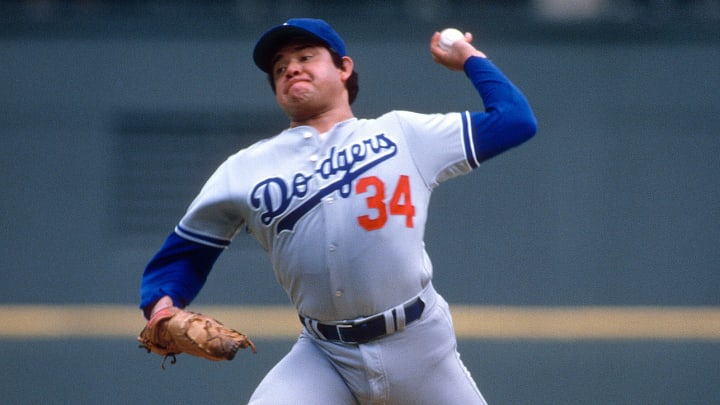Fernando Valenzuela (No. 34), Dodgers

In 1981, a chubby, 20-year-old Mexican lefthander burst upon the major league scene. Though he had pitched 10 games out of the bullpen for the Dodgers the previous September, he was largely an unknown when he replaced the injured Jerry Reuss as the team’s Opening Day starter on April 9, 1981. Valenzuela not only threw a five-hit shutout against the Astros that day, but he also went on to rack up seven complete games and five shutouts in his first eight starts, good for a 0.50 ERA.
Fernandomania took the baseball world and Los Angeles by storm: He landed on the cover of Sports Illustrated, became an icon to the city’s Latino community and drew fans of all backgrounds to parks around the country when he pitched. He started the All-Star Game for the NL, became the first pitcher to win the Rookie of the Year and Cy Young awards in the same season and helped the Dodgers win their first World Series since 1966. Valenzuela went on to earn All-Star honors five more times with L.A., for whom he pitched through 1990. Since 2003, he's been the color commentator for the team's Spanish-language radio broadcasts.
Like the Tigers, the Dodgers generally limit number retirements to Hall of Famers, with Jim Gilliam (No. 19) the only exception; he was part of four championship teams as an infielder and was serving as a coach when he suffered a brain hemorrhage and died the day after the team clinched the 1978 National League pennant. No Dodger has worn Valenzuela's number since he left the team, and it seems petty to keep it out of circulation without officially bestowing the honor.
Valenzuela is not the only one whom the team should consider, either. As the anchor for four pennant winners in the 1970s and ‘80s, the members of the longest-running infield in baseball history—first baseman Steve Garvey (No. 6), second baseman Davey Lopes (15), shortstop Bill Russell (18) and third baseman Ron Cey (10)—are worthy as well.
